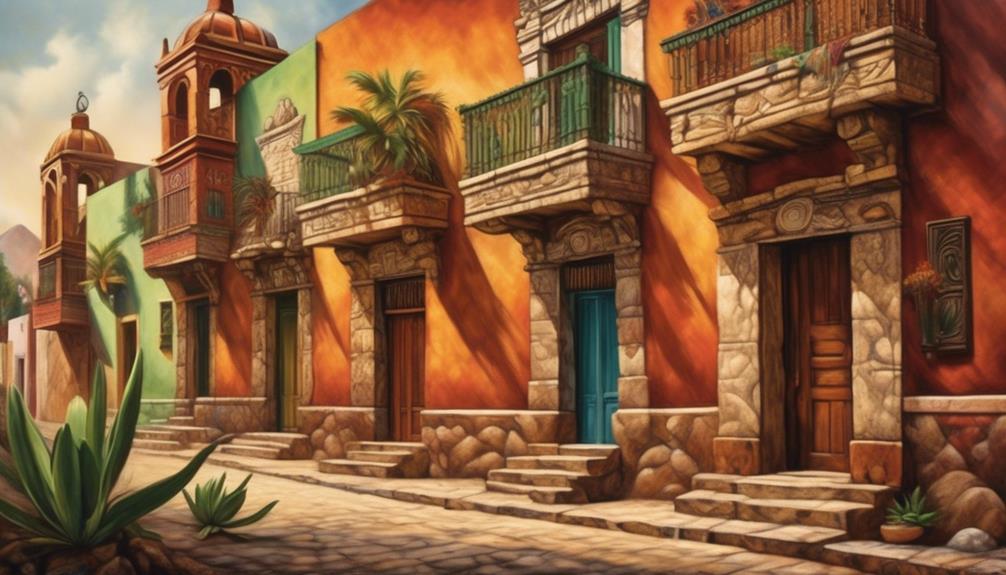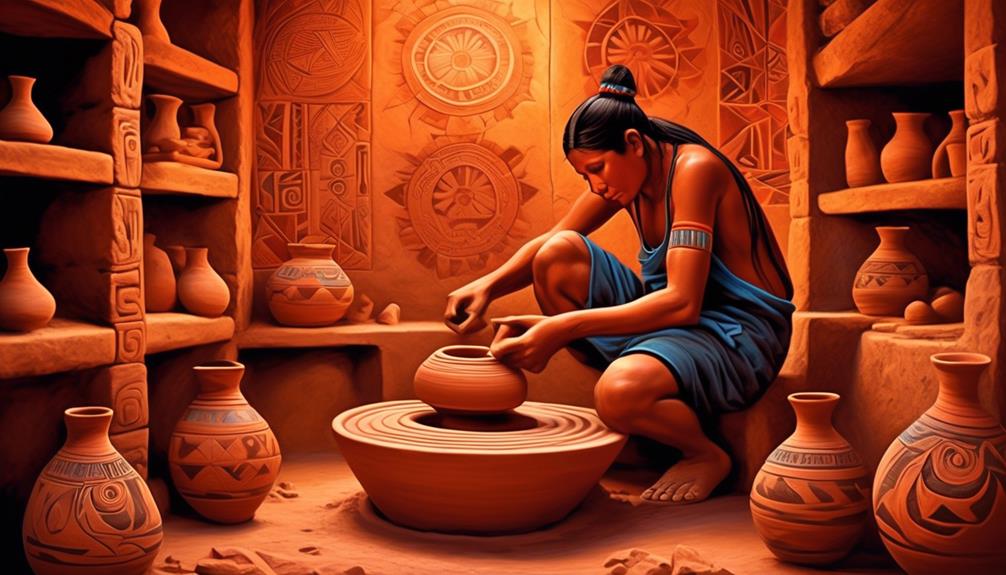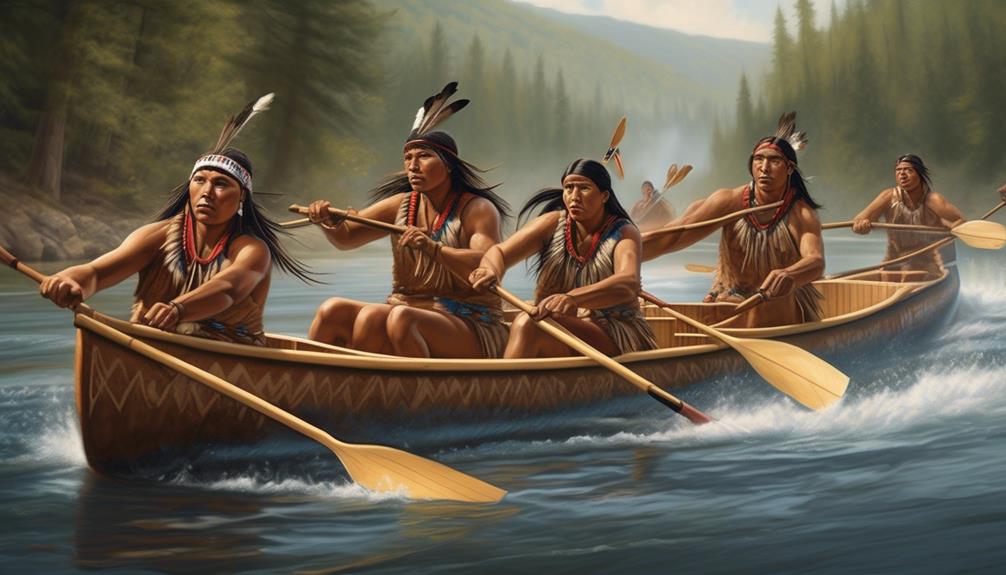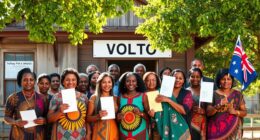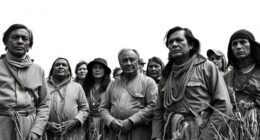Situated in the vibrant heart of Mexico City, encompassed by a blend of colonial architecture and indigenous artwork, Mexico’s human geography embodies a intricate fusion of historical, cultural, and political influences.
The legacy of colonialism and the enduring resilience of indigenous traditions have woven a intricate fabric that defines the landscapes, cities, and identities of Mexico. From the ancient civilizations that shaped the land to the enduring influence of Spanish conquest, the layers of history are palpable in every corner of this country.
But how exactly has this interplay between colonialism and indigenous culture shaped the human geography of Mexico, and what implications does it hold for the present and future of this diverse nation?
Key Takeaways
- Spanish colonialism in Mexico led to the establishment of urban centers as centers of power and economic activity, with Spanish settlers and indigenous populations experiencing economic disparities and a social hierarchy favoring the Spanish elite.
- Indigenous land management practices focused on sustainability and harmony with nature, while Spanish agriculture introduced large-scale land expropriation and monoculture farming, resulting in deforestation and environmental degradation.
- Spanish colonial urban planning introduced the central plaza and grid system, reshaping the physical environment and influencing social and cultural dynamics within indigenous communities.
- The encounter between Spanish colonialism and indigenous cultures led to the fusion of traditions, beliefs, and practices, resulting in cultural hybridity and the formation of a diverse national identity. However, tension remains between cultural assimilation and the preservation of unique indigenous identities in contemporary Mexico.
Early Colonial Settlements and Urban Centers
Early colonial settlements in Mexico were characterized by the establishment of urban centers that served as hubs for Spanish governance, economic activity, and the diffusion of European culture into indigenous societies. The economic disparity between the Spanish settlers and the indigenous population was stark.
The Spanish crown held a monopoly on trade, extracting wealth from the colonies, while the indigenous people faced impoverishment and exploitation. This economic inequality entrenched a social hierarchy, with the Spanish elite holding positions of power and privilege, while the indigenous population endured systemic discrimination and marginalization.
Urban centers became focal points for this unequal distribution of resources and opportunities. The Spanish constructed opulent structures in these urban areas, showcasing their affluence and reinforcing their dominance. Meanwhile, the indigenous population inhabited the peripheries, struggling to eke out a living.
This stark contrast in living conditions perpetuated the social hierarchy, with the urban centers serving as visible symbols of the economic and social disparities that defined colonial Mexico.
Indigenous Land Use and Agricultural Practices
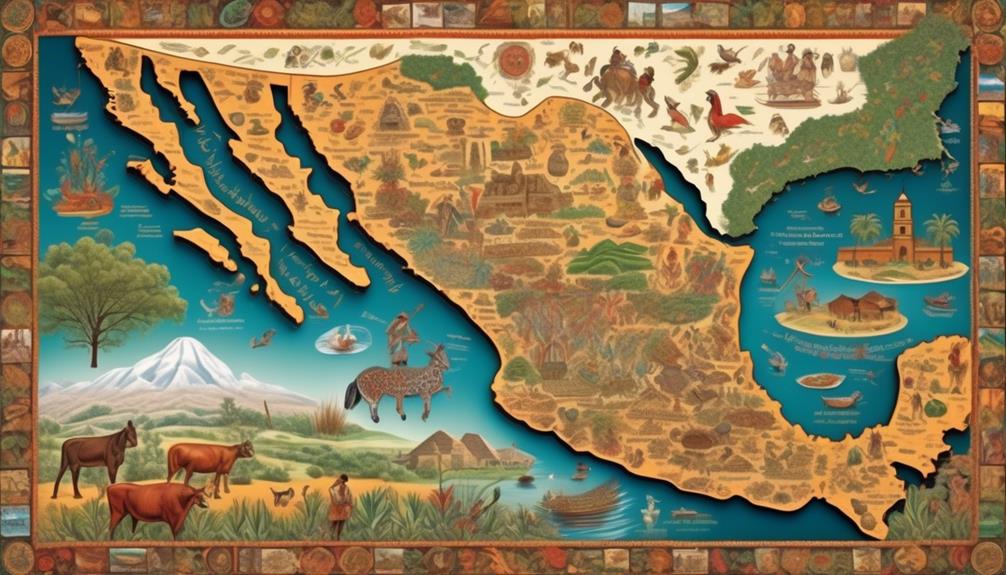
Indigenous land use and agricultural practices in colonial Mexico were integral to the survival and resilience of native communities amidst the encroachment of Spanish colonialism. Traditional farming techniques and sustainable agriculture were deeply embedded in the indigenous land management and crop cultivation practices. The table below highlights the key aspects of indigenous agricultural practices in colonial Mexico compared to those introduced by the Spanish colonizers.
| Aspect | Indigenous Agricultural Practices | Spanish Agricultural Practices |
|---|---|---|
| Land Management | Emphasis on sustainable use of land, including crop rotation and terracing for erosion control. | Large-scale land expropriation and monoculture farming for cash crops like sugarcane and wheat. |
| Crop Cultivation | Diverse range of native crops such as maize, beans, and squash intercropped to maximize yield and soil fertility. | Introduction of European crops like wheat, barley, and olives, often replacing indigenous crops. |
| Environmental Impact | Harmonious coexistence with nature, minimal disruption to ecosystems. | Extensive deforestation and environmental degradation due to large-scale commercial agriculture. |
The contrast between indigenous and Spanish agricultural practices underscores the impact of colonialism on the traditional ways of life and the environment. While indigenous practices were deeply rooted in sustainability and environmental stewardship, the Spanish introduced large-scale commercial agriculture that led to significant environmental and social upheaval.
Influence of Spanish Colonial Urban Planning
The impact of Spanish colonialism on indigenous land use and agricultural practices in Mexico is further exemplified in the influence of Spanish colonial urban planning, which transformed the spatial organization and architecture of native communities. The Spanish influence on urban layout and colonial architecture significantly shaped the urban development of Mexico, leading to the integration of indigenous adaptation into the colonial framework. This integration is evident in the following ways:
- Plaza Mayor: The introduction of the central plaza, or Plaza Mayor, became a focal point of Spanish colonial cities, serving as a space for social, commercial, and political activities. This urban design element redefined the spatial organization of indigenous settlements.
- Grid System: Spanish colonial cities were often designed using a grid system, a departure from the organic layout of indigenous communities. This new structure imposed a sense of order and control, reflecting the Spanish approach to urban planning.
- Cathedral and Government Buildings: The construction of prominent religious and governmental structures in the central plaza symbolized the dominance of Spanish authority and religion, altering the architectural landscape of indigenous communities.
- Hybrid Architecture: Indigenous communities adapted to Spanish architectural styles, leading to a fusion of indigenous and colonial elements in building design, showcasing the process of indigenous integration within the urban framework.
The Spanish colonial urban planning not only reshaped the physical environment but also influenced the social and cultural dynamics within indigenous communities, leaving a lasting imprint on the human geography of Mexico.
Cultural Hybridity and Identity Formation
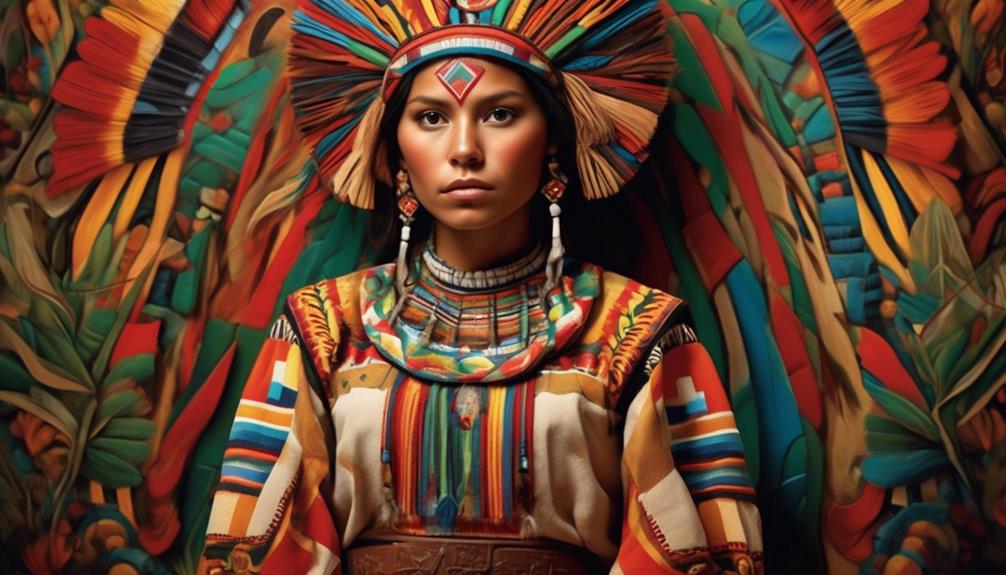
An intriguing aspect of the colonial legacy in Mexico lies in the intricate process of cultural hybridity and the formation of identity within the context of indigenous communities. The encounter between Spanish colonialism and indigenous cultures gave rise to a complex interplay of traditions, beliefs, and practices. Cultural assimilation, while a significant outcome of this interaction, hasn't been a unidirectional process. Indigenous communities have demonstrated remarkable resilience in preserving their unique identities amidst the pressures of colonization.
The notion of cultural hybridity in Mexico is exemplified by the fusion of Spanish and indigenous languages, religious syncretism, and the blending of culinary traditions. This dynamic exchange hasn't only shaped the material culture of Mexico but also influenced the formation of a diverse and multifaceted national identity. However, it's essential to recognize that this process hasn't been without challenges. The tension between cultural assimilation and identity preservation continues to be a salient issue in contemporary Mexico, reflecting the enduring legacy of colonialism in shaping the country's human geography.
Modern Regional Disparities and Development
In examining modern regional disparities and development, it becomes evident that the complex interactions between Spanish colonialism and indigenous cultures in Mexico have had a lasting impact on the country's economic and social landscape. The historical legacy of colonialism and the subsequent marginalization of indigenous communities have contributed to significant economic inequality and infrastructure disparities across different regions of Mexico. These disparities continue to shape the country's human geography and have implications for contemporary development efforts.
Factors Contributing to Modern Regional Disparities and Development in Mexico:
- Economic Inequality: The historical exploitation of indigenous labor and resources during the colonial period has perpetuated economic disparities, with certain regions experiencing higher levels of poverty and underdevelopment compared to others.
- Infrastructure Disparities: The uneven distribution of infrastructure investments, such as transportation networks and access to basic services, has further deepened regional disparities, impacting the quality of life and economic opportunities available to local populations.
- Cultural Influence: The enduring influence of colonial power structures and cultural assimilation has influenced modern development patterns, perpetuating unequal access to resources and opportunities.
- Policy Implications: Addressing these disparities requires targeted policies and investments aimed at promoting equitable development and reducing economic and social gaps between regions.
These factors underscore the need for comprehensive and inclusive development strategies that take into account the historical and cultural complexities shaping Mexico's modern regional disparities.
Frequently Asked Questions
What Impact Did Colonialism Have on the Spiritual and Religious Beliefs of Indigenous Communities in Mexico?
Colonialism profoundly affected the spiritual and religious beliefs of indigenous communities in Mexico. The impact on spirituality was significant, as it led to religious syncretism and cultural assimilation. Indigenous beliefs underwent transformation, combining with elements of Catholicism introduced by the Spanish.
This resulted in a complex fusion of traditions, shaping the spiritual landscape of Mexico. The enduring legacy of this syncretism continues to influence the country's cultural and religious identity.
How Did the Introduction of European Diseases Affect the Indigenous Population and Their Ability to Sustain Their Traditional Agricultural Practices?
Infectious diseases introduced by Europeans had a devastating impact on indigenous communities in Mexico. These diseases severely affected their ability to sustain traditional agricultural practices. The introduction of European diseases wiped out a significant portion of the indigenous population. As a result, it disrupted their societal structure and agricultural knowledge. This loss significantly altered the human geography of Mexico. It also contributed to the reshaping of indigenous spirituality and cultural practices under the influence of colonialism.
What Role Did Indigenous Resistance Movements Play in Shaping the Human Geography of Mexico During the Colonial Period?
Indigenous resilience played a pivotal role in shaping Mexico's human geography during colonial oppression. The resistance movements, like the Mixton War and the Caste War of Yucatan, profoundly impacted the spatial distribution of power and cultural landscapes.
These movements led to the establishment of autonomous indigenous communities and the preservation of traditional territories. Despite the challenges, indigenous groups demonstrated remarkable tenacity in defending their lands and cultural heritage, leaving a lasting imprint on Mexico's geography.
How Has the Legacy of Colonialism Influenced the Distribution of Wealth and Resources Among Different Regions of Mexico Today?
We can't ignore the stark reality that the legacy of colonialism continues to deeply influence the distribution of wealth and resources across different regions of Mexico today.
The distribution inequality and economic disparities are glaring, with statistics showing that the top 20% of the population holds over 50% of the country's wealth.
This historical legacy has shaped Mexico's human geography, creating enduring challenges that demand attention and action.
In What Ways Did the Spanish Colonial Urban Planning Impact the Social and Economic Dynamics of Indigenous Communities in Mexico?
The Spanish influence on urban development in Mexico had a significant impact on indigenous communities. The colonial urban planning disrupted traditional social and economic dynamics, often displacing indigenous populations and altering their way of life.
This resulted in the concentration of resources and power in certain areas, leading to unequal development and opportunities. Understanding these historical processes is crucial in comprehending the current human geography and socio-economic disparities in Mexico.
Conclusion
In conclusion, the impact of colonialism and indigenous culture has greatly shaped the human geography of Mexico.
Today, over 20% of Mexico's population identifies as indigenous, contributing to the country's rich cultural diversity.
The influence of Spanish colonial urban planning can still be seen in Mexico's urban centers, while modern regional disparities highlight the ongoing effects of historical colonization.
This complex blend of influences has created a unique and dynamic landscape that continues to shape Mexico's identity.
